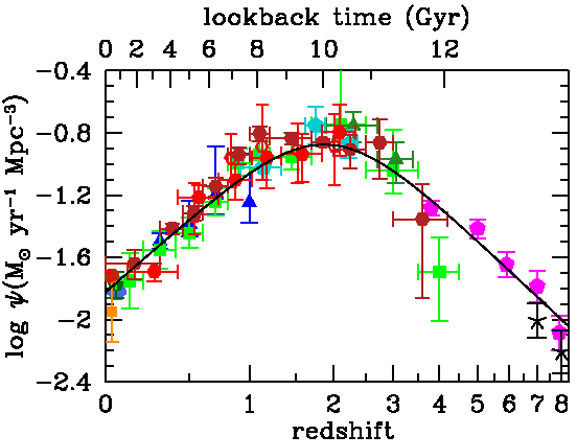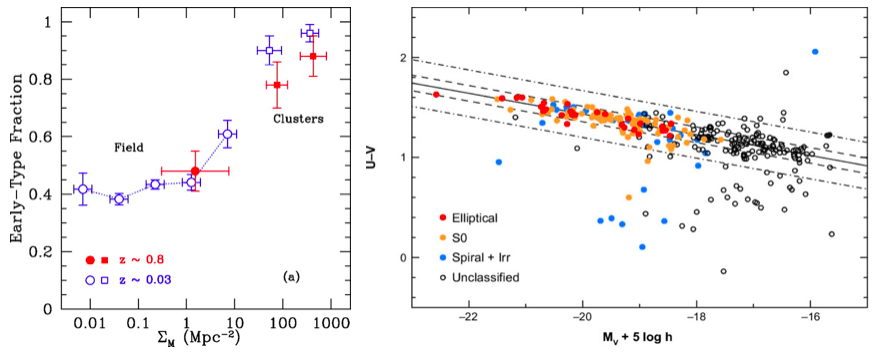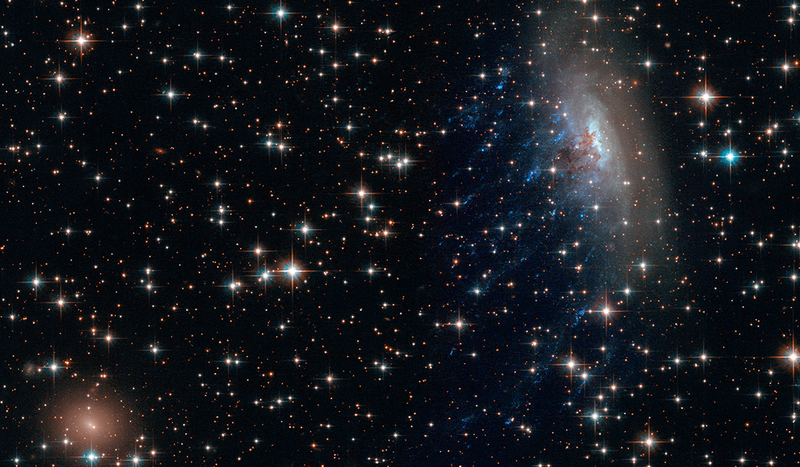THE SCIENCE OF GaTOS:
The main features of galaxies that can be directly determined
through observations are brightness, color, angular size,
morphology and redshift. While the latter allows us to trace the
distribution of galaxies along the line of sight, color is the
manifestation of their underlying stellar populations and
interstellar medium. It has been observationally established that
the color distribution of galaxies is bimodal, i.e. there are red
and blue galaxies. Whereas red galaxies are essentially objects
dominated by old stellar populations, with no star formation and
an early-type (E, S0) morphology, blue galaxies are objects
dominated by young stellar populations, with on-going star
formation and a late-type (Sp, Irr) morphology.

One of the main questions that arise from the existence of
star-forming and passive galaxies is how galaxies stop forming
stars. The quenching of star formation is a stringent requirement,
from an statistical point of view, in order to produce the
observed distribution as a function of cosmic time of the star
formation rate density of the universe (Fig. 1). After reaching a
peak of star formation activity at redshifts z=1-3, the cosmic
average of star formation in galaxies decreases down to z=0. The
details of such stellar quenching are still far from being
completely understood. Several physical processes that may affect
the star formation activity in galaxies have been identified, some
linked to galaxies temselves (e.g. stellar mass, AGN, SNe), some
related to their surrounding environment (galaxy-galaxy,
galaxy-IGM interactions). This nature vs nurture problem is matter
of very active research in galaxy evolution studies.
The environment around galaxies is usually characterized in terms
of galaxy or mass overdensity. The environment can thus be
classified into clusters of galaxies, groups of galaxies,
filaments, and the field. Observational evidence demonstrates the
reality of a correlation between environmental density and galaxy
properties such as morphology and star formation. In simple terms,
dense regions - in galaxy number and/or mass density - are
dominated by early-type, red-and-dead galaxies, whereas late-type,
star-froming galaxies are preferentially localted in low-density
regions such as the field. For example, the cores of galaxy
clusters are mainly populated by early-type galaxies, while
cluster outskirts are dominated by late-type galaxies
(Fig. 2-Left). In a Color-Magnitude Diagram (Fig. 2-Right), those
red-and-dead galaxies form a linear locus with a small (<0.1)
color scatter - the red sequence - indicating thier uniform
properties in stellar populations. This red sequence and the
morphology-density or star formation-density relations (Fig. 2)
strongly suggest that the environment in which galaxies reside
must play a significant role in their star formation history and
their quenching.

The GaTOS collaboration is dedicated to the detailed study of galaxy properties in different environments (galaxy clusters, groups of galaxies, filaments) to study their evolutionary transformations and thus assess the role of clusters, groups and filaments in the quenching of galaxies. The most important goals are: (1) determine the dominant physical process that drives the formation of the red sequence and the morphology-density relation; (2) undertand environmental quenching and the role of pre-processing in the formation of those relations; (3) provide an accurate picture of galaxy evolution as a function of environment and thus solve the nature vs nurture problem.
